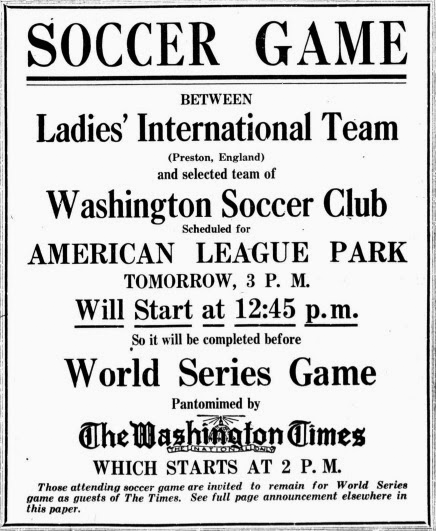
Source: The Washington Times.
On December 5, 1921, the English Football Association (FA) banned women’s football from club affiliated football grounds deeming the sport dangerous to the health of women and utterly unladylike. The real and unstated reason for the FA’s ban was the increasing popularity of the women’s game and the threat it posed to the men’s leagues. The ban was aimed at one women’s team in particular, the most formidable women’s team in England, Dick, Kerr Ladies Football Club. The FA’s ban forced the women of Dick, Kerr to play on unaffiliated grounds, which ultimately led the club to look for opportunities outside of England, resulting in an American tour and a visit to the nation’s capital, Washington, D.C in 1922.
Dick, Kerr Ladies was the most famous women’s team by the time of their United States tour. The outfit formed alongside many other women’s clubs during the height of World War I as woman entered the workforce at an unprecedented rate. Women inevitably formed football clubs as their male counterparts had decades before. Alfred Franklin, an office worker at Dick, Kerr, noticed that women indulged in the game along with their male coworkers throughout breaks in the workday. Witnessing their ability, and sensing an opportunity for the woman to contribute further to the war effort, Franklin urged the woman to form a factory team and to play for charity. The women complied and competed under the name Dick, Kerr Ladies F.C. starting on Christmas day 1917.
In front of over 10,000 spectators, the Dick, Kerr Ladies made their debut in a 4-0 victory against the women of Arundal Courtyard Foundry at Deepdale, the home of Preston North End. The women played the game for charity aiding local wounded soldiers with the gate receipts, which became standard practice for the women throughout the war. Over the next four years, Dick, Kerr Ladies continued to rack up wins in the name of charity even after the signing of the Treaty of Versailles. Dick, Kerr Ladies string of victories included a 2-0 victory in the first women’s international match against a French eleven in 1920. As the women’s club profile increased, contempt from men grew, including those within the sport’s governing body. Dick, Kerr Ladies involvement in several matches benefiting forcibly unemployed miners in 1921 further roused the ire of the FA, which culminated in the FA’s ban in December 1921. Despite the ban, the club continued to compete on grounds unaffiliated with the FA up until finding a tempting opportunity overseas.
Coming to America
Under the direction of the Brooklyn Football Club, Dick, Kerr Ladies F.C. planned to take part in over twenty games throughout Canada and the United States during the fall of 1922. Several issues immediately arose that shortened the club’s stay substantially. Upon docking in Quebec, the women experienced their first setback as they learned that the governing body of Canadian football, the Dominion of Canada Football Association, did not sanction women’s football and refused to allow the club to play within the country. Ostensibly banned from competing in Canada, the number of games available to the club shrunk substantially as women in the United States did not widely play the sport. The lack of available women’s clubs inevitably forced Dick, Kerr to compete against men’s teams, many of whom recently joined the professional American Soccer League (ASL). To further compound the club’s already mounting troubles, the United States Football Association (USFA) had to take over the club’s finances during their tour after the Brooklyn Football Club proved fiscally irresponsible. Nonetheless, Dick, Kerr Ladies carried on and made their United States debut against the men of the Paterson Football Club in Clifton, New Jersey in front of over 5,000 spectators on September 24, 1922.
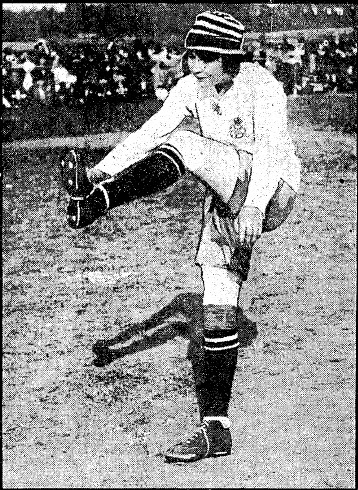
Source: The Washington Post.
The game in Clifton proved to be the first of just nine games Dick, Kerr Ladies would play within the States. Due to the unexpected level of competition and the numerous issues the women endured, Dick, Kerr Ladies unsurprisingly lost their first game against Paterson 6-3. Regardless, the women proved both a worthy opponent and somewhat of a novelty with the abilities of several of the women, including outside-left, Lily Parr garnering praise in the New York Times the following day. (Parr would later become the first female inductee into England’s National Football Museum in 2002.) The women drew their next game 4-4 against J & P Coats Football Club in Pawtucket, Rhode Island, and lost their third game 7-3 in New York City to the men of Centro-Hispano in front of 7,000 curious spectators. It was at this point during the tour, the USFA stepped in to take over the club’s management. The change in management also brought alterations to the club’s tour as the USFA dropped games in many cities from Dick, Kerr Ladies schedule. Dick, Kerr Ladies meeting with an amalgamated eleven at American League Park (later renamed Clark Griffith Stadium) in Washington D.C. was also affected by the USFA’s takeover as their game was moved to October 8.
Soccer in Washington and Dick, Kerr
In 1922, soccer in Washington was still a work in progress. The growth of the game sputtered time and again and was an outlier within the city’s sports scene, despite the city fielding one of the country’s first professional teams in 1894. Lacking the industrial factory teams of the Northeast, the British Embassy was consistently at the fore of the game in Washington as the government entity sported a team throughout the early 1900s. While the game’s powerhouses in the Northeast were creating the professional American Soccer League in 1922, clubs within Washington were still attempting to create an amateur league within the city, resulting in the formation of the short lived District Soccer League in January 1922. By the summer, the city league was non-existent and Washington’s soccer leaders were busy establishing a team to compete in the newly formed — and USSF sanctioned — Southeastern Soccer League (SSL). Ultimately, the creation of the SSL gave birth to the eleven that would represent Washington and face the most famous women’s team in the world, as the Washington Soccer Club picked its players from clubs who competed in the defunct District League. Though the club officially got practice underway just weeks before Dick, Kerr Ladies arrived in America, hype around the game had been building since local newspapers announced the club’s visit during the summer.
Each of the city’s dailies periodically reminded Washingtonian’s of Dick Kerr’s visit for months prior to the October 8 matchup. Though they were erroneously referred to as the Newcastle United Ladies Football Club prior to the game — with The Washington Herald even referencing the team by that moniker on the day of the the game — the matchup against the venerable women was excitedly promoted, correct club name or not. The Washington Post billed the matchup as “one of the most unique invasions into the District’s sports realm,” while the Herald considered the contest “one of the most unique international athletic competitions in the history of District Sportsdom.” While the Herald and the Post were enthusiastically supporting the game, The Washington Times were chief amongst the Washington press to cover the distinctive matchup and the de facto promoter of the game. The Times had a self-serving interest in promoting the game that would result in an alteration to the Dick, Kerr Ladies game day schedule.
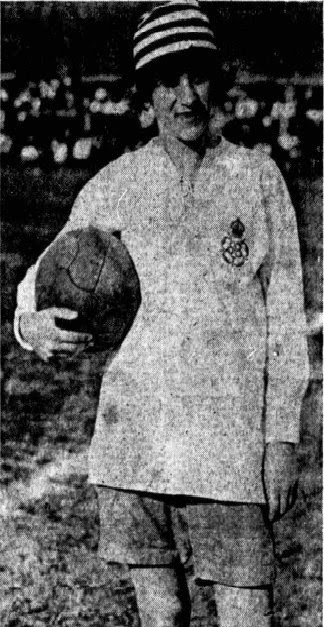
Source: The Washington Times.
Led by the Times, the Washington press lauded the achievements of the women’s eleven, noting their collective record and international results. In addition to highlighting the achievements of the team as a whole, the dailies extolled the talents of both Lily Parr and club captain, Alice Kell, featuring pictures of both women in articles leading up to the game. The press, seeking to capture the attention of those familiar with the game, emphasized the praise given to the women by famed English center back, Bob Crompton, while the Times specifically pandered to their more chauvinistic readers by closing out their October 7 article thusly, “yes, some of them are pretty.”
While promoting the Dick, Kerr Ladies, the Times was also busy pushing another unusual event taking place at American League Park during the month of October, The Pantomime World Series. The newspaper went to great lengths to secure the services of Marines from the Washington Navy Yard and the Marine Barracks to reenact the 1922 World Series pitch-for-pitch in real time. The newspaper also obtained a dedicated telegraph wire from the Polo Grounds in New York so the players could enact the game minutes after the action took place in New York. The pantomime game also featured a full sixty-piece marching band led by the U.S. Navy Band’s founder Lt. Charles Benter. Despite the option to listen to the game over the radio, around 10,000 Washingtonians opted for the free show and filled American League Park to watch the shadow-ball World Series on October 4. The first game was such a rousing success that the Times committed to continue the spectacle for the duration of the real World Series, which inevitably coincided with the visit of Dick Kerr Ladies F.C.
After weeks of obstacles and alterations to the Dick, Ladies tour, the women were set to meet the choice eleven of the Washington Soccer Club at 3:00 pm on Sunday, October 8. The game’s kick-off coincided with Game 5 of the World Series, which proved problematic for the Times as the paper was committed to staging each World Series game live as evidenced by the paper’s full-page advertisements for their sponsored enactments. The Times, wishing to further curry the favor of its readers, requested that the women make one more adjustment to their schedule, the kick-off time of their game against the Washington eleven. The paper was so committed to its pantomime endeavor that it offered to pay both club’s to move their matchup’s kick-off time. Both clubs acquiesced to the paper’s request after the daily agree to pay each club, a fact that the Times made sure their readers knew by advertising the lengths the paper went through to stage their show. Not wanting to alienate any of their readers who happened to be soccer fans, the Times also invited anyone attending the Dick, Kerr Ladies affair to remain at American League Park for the World Series game as guests of the newspaper. Finally, after weeks of both problems and promotions, the matchup between Dick, Kerr Ladies F.C. and the Washington Soccer Club kicked off at 12:45 pm on October 8.
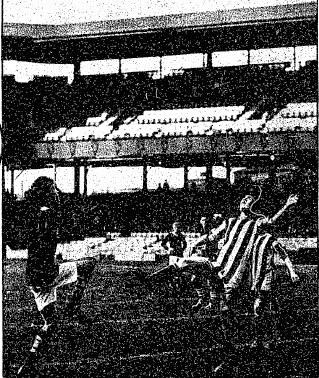
The women entered the game highly regarded and did not disappoint (though the existing coverage of the game leaves much to be desired). Prior to their game in Washington, press throughout the Northeast lauded Dick, Kerr Ladies for their combination play and passing ability. The women leaned on these skills to compete against the stronger and faster males of Washington as they had throughout their American tour. In front of around 7,000 fans, the women held Washington to a stalemate until the men scored the first goal in the 26th minute. Not to be outdone, Lily Parr evened the score for Dick, Kerr Ladies just before halftime. After Washington quickly scored two goals early in the second half, the game opened up and the women pushed forward seeking goals. Subsequently, the game finished a 4-4 draw, but not after a dramatic comeback by Dick, Kerr Ladies who scored two goals in the last ten minutes of the match to secure the draw. Among the games stars were, of course, the venerable Lily Parr who scored two goals from seven shots, and Dick, Kerr Ladies keeper, Carmen Pomies who stopped eleven of Washington’s fifteen shots. In the end, the game garnered far less coverage than the World Series Champion New York Giants and the Times sponsored pantomime of the fifth game of the World Series, though in the days following the game The Washington Post printed several photos from the game within the newspaper. In addition to the extra money Dick, Kerr Ladies received from the Times, the women also left Washington with another item of value: a soccer ball signed by President Warren G. Harding.
Following their brief stay in Washington, Dick, Kerr Ladies played five more games along the Atlantic Seaboard rounding out their trip with 6-5 defeat at the hands of the Philadelphia Football Club. Overall, Dick, Kerr Ladies finished their limited nine-game American tour with a respectable record of three wins, three, draws, and three losses. The women sailed home via the Port of New York on November 9, just one month after entertaining fans in the nation’s capital. Once in England, Dick, Kerr Ladies continued to play for charity despite the FA’s ban. The club changed its name in 1926 to Preston Ladies F.C. and continued to compete under that designation for the next forty years until 1965, just five years before the FA officially renounced their ban and permitted women’s football in 1971. The FA formally issued an apology for the 1921 ban in 2008. Paradoxically, as the women’s club was ceasing operations, soccer in Washington was finally angling to compete at the professional level during the late 1960s as the game experienced its first jolt of nationwide investment.
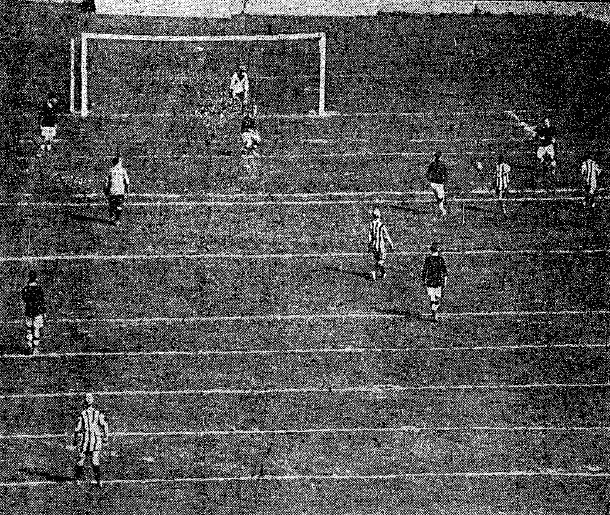
—0—
In writing this article I relied on multiple primary and secondary resources. As always, for my primary resource material I consulted several newspapers including; The Baltimore Sun, The Guardian, The New York Times, The New York Tribune, The Washington Herald, The Washington Times, and The Washington Post. In addition to the many newspapers I used, I analyzed many websites and articles with Ed Farnsworth’s article on Dick, Kerr Ladies visit to Philadelphia and its place within women’s soccer history in that city chief among them. With anything dealing with Dick, Kerr Ladies F.C., one must certainly reference Gail Newsham’s work on the club. Ms. Newsham is the club’s official biographer and author of the book In a League of Their Own which definitively covers the club and the historical importance of the women. I also referenced the following articles and websites: Spartacus Educational’s piece on Dick, Kerr Ladies, Donmouth’s coverage of women’s football, The 1922-23 Spalding Soccer Guide’s coverage of the club’s visit, and, as always, The American Soccer History Archives.
A version of this article originally appeared at A Moment of Brilliance on March 9, 2014

Pingback: Atlantic Crossings (Football in North America, Part Two) - The 1888 Letter
I really like this article. I would like to attribute it fully in my forthcoming book about Carmen Pomiès. Can you help me find out more about this? Can you help to spread the word about the new book?